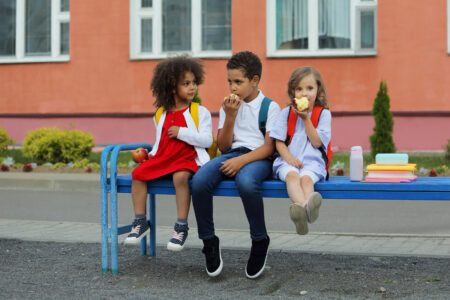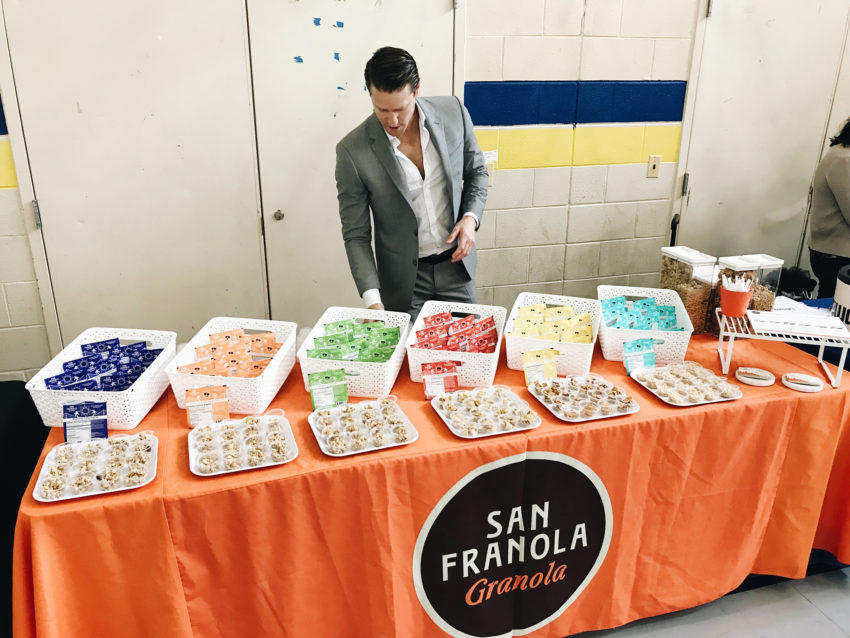
Share On Social!
When David Miskie graduated from UC Berkeley, he wasn’t planning on starting a cereal company.
He actually worked for a few years in consulting, private equity, and investment banking.
But after working on consumer products, Miskie, his dad, and his best friend Matt Teichman had an idea – What if we could create a product that everyone loves and make it healthier and better for you?
That’s how San Franola Cereals & Snacks was born.
Ten years later, San Franola is focused on distributing high quality, whole-food cereals to public schools. They’ve even expanded their labels to include Spanish, so that Spanish-speaking, Latino families can know what healthy ingredients are in their cereal.
While keeping up with consumer demand and adjusting to the COVID-19 pandemic has brought challenges, Miskie is dedicated to leading San Franola in the fight for healthier school meals.
From Grocery Stores to Public Schools
Originally, Miskie started San Franola focused on making cereal with less processed ingredients to sell directly to families.
“We love cereal, as I think a lot of people do. It’s kind of an American comfort food. So even before thinking about schools, San Franola was really trying to figure out a way to make things taste good, but also have minimal to no processed ingredients. And we didn’t want people to compromise, we really wanted to make recipes that families could eat and serve for their kids to eat themselves, and ultimately feel confident that these are the ingredients and nutrition panels that they should be feeding to their kids,” Miskie said.
With a family recipe, Miskie and his father created the first San Franola cereal in 2010. They started selling it at farmer’s markets. The cereal’s popularity grew quickly, and they sold it at grocery stores like Whole Foods.
San Franola makes a couple of different types of cereal, such as Blueberry Crisp Granola, Apple Crisp Granola, and Cinnamon Vanilla Crunch Granola. They use whole food ingredients like whole rolled oats, rice flour, and natural flavors. San Franola is proud to use recipes that contain low sugar compared to other standard cereals and are safe for kids with allergies due to being peanut free, tree nut free, soy free, and gluten free.
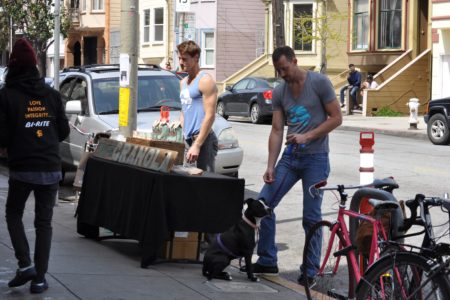
Consumers in stores were loving the taste and nutrition of San Franola.
Then someone suggested they start distributing San Franola directly to schools.
“We met a chef who worked at New York Public Schools. Incredibly smart, talented, just kind of a visionary person, and her name is Meserete Davis. And she had said, ‘Hey, have you ever thought about looking at schools?’ And we said, ‘Well, we thought about it, but we didn’t know much about the industry.’ And her perspective was if you really want to make an impact and you want to reach the most amount of people that probably need this type of nutrition, then this is what you should be thinking about,” Miskie said.
Miskie and the San Franola team started considering how to integrate their cereal and snack products with public schools.
“When you look at schools, you start to see how large this audience really is, and ultimately how big of an impact you can make with your products, especially in schools where there’s close to 60 million kids eating food every single day in schools. Most of those kids are relying on this food as the only meals that they’re getting throughout the day. That made us want to focus only on serving the school population in America, just because you can reach so many people so quickly,” Miskie said.
In 2015, San Franola made the switch to sell their cereals directly to schools instead of in grocery stores. This meant refocusing some of their company goals.
“For us, it was less so about building a big company, but more about how we can start to tie together the impact we’re making and investing in communities and people that that meant a lot to us. So now, all we do is just focus on [schools]. Because I think oftentimes, this channel is underlooked from large food manufacturing companies. It’s kind of the last place that you see food being thought about, and our concept is let’s flip that. Let’s put these students and their families first,” Miskie said.
How San Franola Helps Latino Kids and Families
As San Franola has grown to distribute cereals in public schools across the company, Miskie has become increasingly aware of how their cereals are impacting Latino families.
“If you really look at the largest public school districts in America, those populations are at a minimum 50% Spanish-speaking, Latino families. And in LA and parts of Miami, around 70 to almost 80% of the families that are in these districts are Latino, Spanish-speaking families. So when you think of school food, what you really are addressing are what sort of inequalities you see with food in America,” Miskie said.
Working with public schools has helped Miskie understand how many Latino families may struggle with access to healthy food.
“A lot of the families are first generation Americans, they’re working restaurants, they’re working agriculture. They’re relying on school to help bridge that gap where both parents have to work. So oftentimes, that’s why schools become this main feeding ground for the families. So from our perspective, we want to help everyone in America, but if you’re going to deal with public schools, then the population that you really want to listen to and cater to is the Latino population,” Miskie said.
Unfortunately, Latino children face many nutrition and food access disparities.
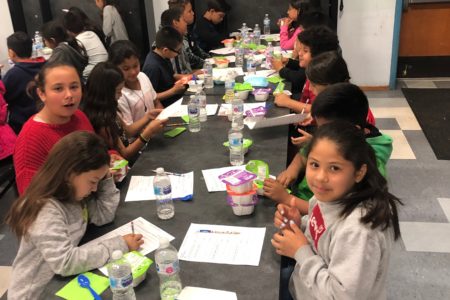
Not only do Latino neighborhoods have one third as many supermarkets as predominately white neighborhoods, but Latinos face widespread poverty, food swamps, and food insecurity, according to a Salud America! research review.
“If you’re a Latino kid, you’re three or four times more likely to be obese, have type two diabetes. And those are not coincidences, there’s a reason that is happening. And if somebody doesn’t do anything, this isn’t going to change,” Miskie said.
Miskie wants San Franola to be a part of that change.
One way they’re being a part of the change is listening to feedback from Latino families.
“We were doing student testing on some new products and there was an 11- or 12-year-old who came up to us and said she loves the product. She kind of pulls me aside and basically says, ‘You should print this packaging in Spanish, because if you print it in Spanish, then my mom can buy this on Saturday. Can you do that?’” Miskie said.
Miskie loved the suggestion and brought it to the team. Then, San Franola became one of the first cereal companies to print their nutrition labels in Spanish and English.
“There is clearly a communication gap and barrier that happens with school food products. We need to start figuring out how to connect with these families in these communities. To us, it just opened up all these other doors, like how else can we continue to support these communities? So we’re proud and happy to think of ourselves as a partner with not just schools, but communities and families and the Latino population here in America,” Miskie said.
Now the challenge is just to keep up with consumer demand.
Challenges Along the Way
Creating a cereal company is no easy feat, especially when demand is high.
“Our biggest challenge has been keeping up with demand. What’s amazing about some of the families we’ve worked with, especially in LA and New York, once they see a product that the kids like, they start telling their aunts, their uncles, their abuelos, and you start to see how communities really support and get around each other. So once we enter a school district, the product starts growing in demand so quickly, it can be a challenge, actually keeping up with it,” Miskie said.
Miskie is encouraged by the growth, even if it is difficult.
“It’s a good problem to have and a sign that products like ours are really needed in schools, and that families who maybe haven’t been given a voice are saying, ‘Hey, we know this food is being given to us for free, but it still should be high quality, and we’re still a part of this community,’” Miskie said.
Miskie and his team have also had to figure out how to make high quality, nutritious foods affordable for schools buying their products.
“One of the biggest challenges you’ll see in this industry is cost. It’s very cost driven. But for us, since day one, we’ve been thinking about how we make these margins and these cost structures work for school, such that they can look at our product and look at our health ratings, higher student testing, and ultimately be the same price as some of our other processed, higher sugar competitors. And that’s what we wanted to enable the school districts to do, not have to think about price, just purely think about nutrition and taste,” Miskie said.
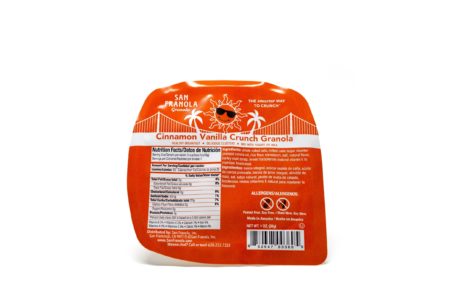 The COVID-19 pandemic has also changed the way San Franola operates. Adjusting to virtual connections with schools has been important.
The COVID-19 pandemic has also changed the way San Franola operates. Adjusting to virtual connections with schools has been important.
“I think a big part of this job that makes it so fun is actually visiting schools across the country and getting a chance to meet families and kids. Once we work with the school district, we also make partnerships with local food banks. Every product that we’re selling into school, we’re also looking to donate more products to support those families outside of school. I think that, in some ways, is one of the most satisfying parts of this job, seeing the impact and meeting the people that actually you’re directly positively affecting. So this pandemic kind of took that out of the whole situation, and everything we had to do was actually remote. In some ways, it sort of changed the way that we had to communicate with families,” Miskie said.
Miskie is inspired to do his work by the children he helps.
“It really is kids. The previous part of my life was spent in an office or in an airplane. And then the latter part in parts of districts and regions of Miami, Florida, or Houston, Texas, or different parts of Chicago and meeting kids, seeing how resilient and smart and honest and just here as humans that they are,” Miskie said.
“I think that every day, it’s what drives me to want to do something that I can to support the growth, and desire to live a quality life, especially kids that maybe don’t have equal access to the things that everyone else does in America. When you meet that, I think it changes you for life. And it’s hard to want to focus on anything else. That’s what I think about every day as we face the challenges as a company, as a business. It’s all worth it.”
Get San Franola Involved at Your School
Miskie wants parents to feel like they have a voice in their kid’s school nutrition and to feel like they can advocate for nutritious school foods.
“If you are a parent and your child is relying on schools for meals and participating these programs, you should feel like you have a voice and a say in what your kids eat. And a lot of parents don’t think so because the food is subsidized, it’s free,” Miskie said.
Families can reach out to San Franola on social media or through their website to get involved with them.
While San Franola no longer sells directly to stores, parents can work with them to get their children’s schools on board with healthier cereal.
“Oftentimes, if they reach out to us directly, they let us know what school districts they’re in, we can start to help build a case for how we can get this product into their schools. And so we can be an advocate for them as well,” Miskie said.
Explore More:
Healthy FoodBy The Numbers
142
Percent
Expected rise in Latino cancer cases in coming years
This success story was produced by Salud America! with support from the Robert Wood Johnson Foundation.
The stories are intended for educational and informative purposes. References to specific policymakers, individuals, schools, policies, or companies have been included solely to advance these purposes and do not constitute an endorsement, sponsorship, or recommendation. Stories are based on and told by real community members and are the opinions and views of the individuals whose stories are told. Organization and activities described were not supported by Salud America! or the Robert Wood Johnson Foundation and do not necessarily represent the views of Salud America! or the Robert Wood Johnson Foundation.



